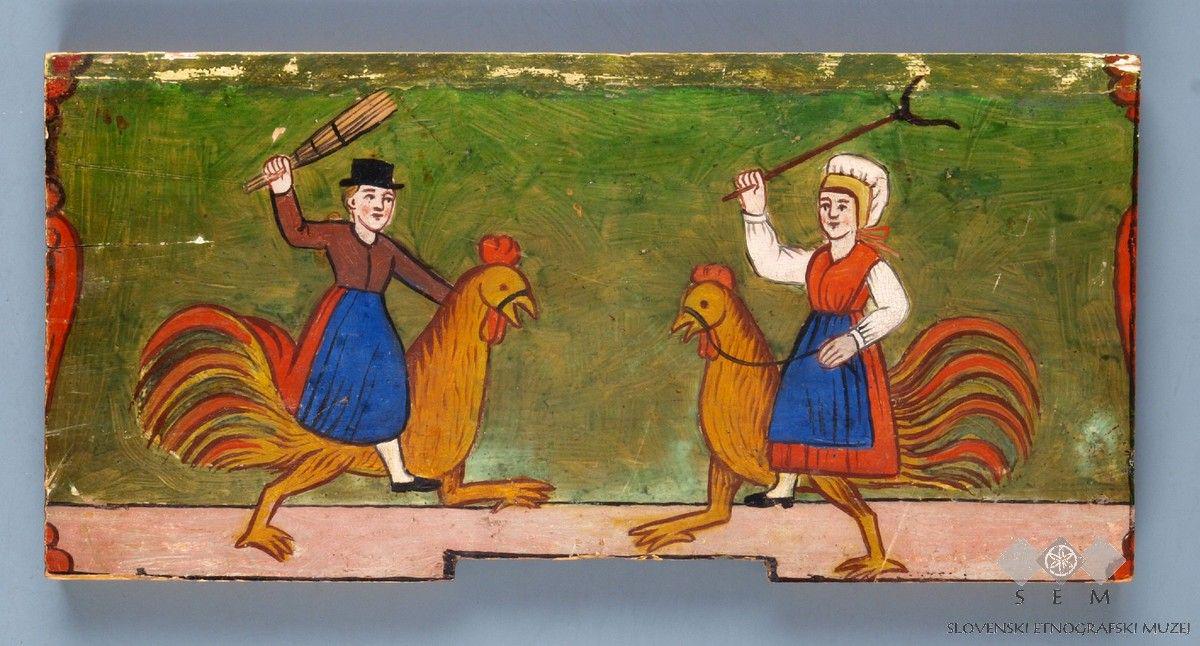
At first glance, they look like a cross between folk art and comics. They tell fantastical stories that reveal deep truths about our everyday lives – and they’re found in a most unexpected place.
Slovenian beehive panels are unique works of art that have come to symbolize the country’s venerable tradition of beekeeping. They are essentially painted blocks of wood that protect the exposed front part of a beehive from the elements when the hive is placed in a traditional Slovenian apiary. At first, the designs on the hives were simple, intended solely to help beekeepers to tell one beehive from another. By the 18th century, however, a new form of folk art had emerged: Throughout Slovenia’s Gorenjska (Upper Carniola) region, self-taught local artist, usually poor members of the peasantry, began to paint ingenious images on their beehives.
Some of the motifs were religious in nature, while others were humorous, and the practice eventually spread to other parts of Slovenia. The pioneering beekeeper Anton Janša, who was a skilled artist, helped to popularize the craft, and came up with several ingenious designs of his own. Eventually, dozens of archetypical images began to emerge, often with witty comments of everyday life: animals holding a funeral for a hunter, a cowardly tailor fleeing from a snail, a wife dragging her husband home from a local inn, and so on. These witty scenes were a great novelty at a time when most folk art was religious in nature.
The art of painted beehive panels began to die out in the early 20th century, and the images now serve as a window to another age – the humor, the concerns, and the values of a time long gone. However, their sheer humanity has ensured their continued popularity, and they are recognized as a uniquely Slovenian form of folk art.
The Beekeeping Museum in the town of Radovljica is devoted to all aspects of Slovenia’s apiculture, but for many visitors, the museum’s extensive collection of painted beehive panels is the main attraction. The panels have become so popular that souvenir shops do brisk business selling reproductions to locals and tourists alike, giving new life to images whose universal humor and humanity is as relevant today as it was centuries ago.

































































